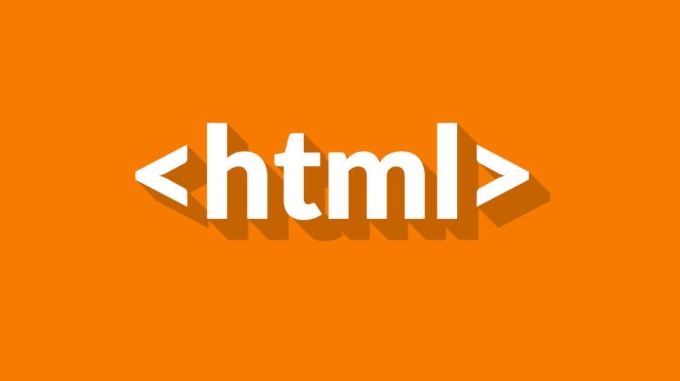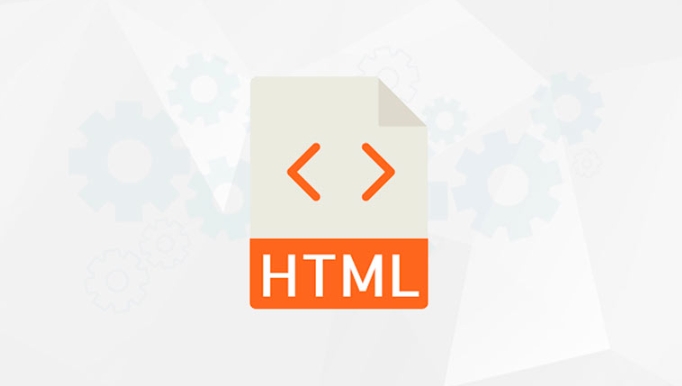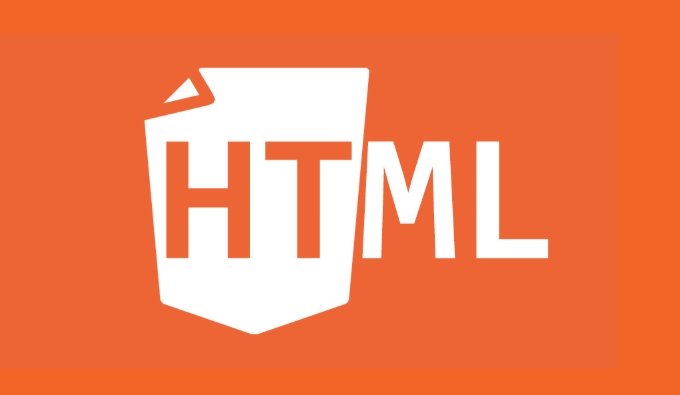Structuring Content Using Unordered and Ordered Lists in HTML
Jul 09, 2025 am 12:05 AMUnordered lists are suitable for items without a specific order, and are wrapped with
<ul> tags, and each entry is represented by <li>; an ordered list is used for content with order requirements, and is wrapped with <ol> tags, and each entry is also represented by <li>. 1. Unordered lists use dots as marking symbols by default, and are often used in scenarios such as website navigation menus, article labels or product feature introductions. 2. The ordered list is displayed in sequence through numbering, suitable for operation steps, competition rankings or teaching processes, and the numbering style can be defined through type attributes. 3. Lists can be used in nesting, and they can be included in each other, but you need to pay attention to issues such as indentation, hierarchy, and semantics to improve readability and SEO effect.
In web development, lists are one of the most common ways to organize information. HTML provides two basic list structures: unordered list and ordered list. They not only improve the readability of the page, but also help search engines better understand content structure.

What are unordered and ordered lists?
Unordered lists are suitable for items without a specific order, such as shopping lists, hobbies, etc., and are wrapped with <ul></ul> tags, and each entry is represented by <li> .

Ordered lists are used for content with order requirements, such as step instructions, rankings, etc., and are wrapped with <ol></ol> tags, and each entry is also represented by <li> .
For example:
 <ul>
<li>
<ul>
<li>
Unordered list:
<ul> <li> bread <li> milk <li> egg <li>Ordered list:
<ol> <li> Open a browser <li> Enter the URL <li> Press EnterBoth lists can be used in nesting to build more complex structures, such as menu navigation or multi-level task listings.
How to use unordered lists correctly?
When there is no order between the content items you list, you should use an unordered list. It uses dots as marker by default, but can also be customized with CSS.
Common usage scenarios include:
<ul> <li> Website navigation menu <li> Article tags or keywords <li> Product Features Introduction The writing method is very simple, you only need to wrap multiple <li> in one <ul></ul> :
<ul> <li>Home </li> <li>About Us</li> <li>Contact Us</li> </ul>
If you want the list to look more beautiful, you can use images, icons, or custom colors to replace the default dots with CSS.
When should I use an ordered list?
When your content needs to be displayed in order, such as operational steps, competition rankings, teaching processes, etc., an ordered list should be used.
For example, the steps to make a cake:
<ol><li> Prepare materials<li> Mix flour and eggs<li> Pour into the mold<li> Put in the oven to bakeIts HTML structure is also very straightforward:
<ol> <li>Preparation of materials</li> <li>Mix flour and eggs</li> <li>Pour into mold</li> <li>Put in the oven to bake</li> </ol>
You can also change the numbering style through type attribute, such as using letters or Roman numerals:
type="A" : capital letters<li> type="a" : lowercase letters<li> type="I" : capital Roman numeral<li> type="i" : lowercase Roman numeralThis allows you to choose the appropriate numbering method according to the content style.
List nesting and notes
Sometimes we need to include another list in one list item, which requires the use of nested structure. Whether it is <ul> or <ol> , it can be nested with each other.
For example, a menu may have first-level classification and sub-category:
<ul>
<li>Home </li>
<li>Products<ul>
<li>Mobile phone</li>
<li>Computer</li>
<li>Accessories</li>
</ul>
</li>
<li>Service</li>
</ul>The following points should be paid attention to when nesting:
<ul> <li> The internal list should be indented to facilitate reading of the source code <li> Each<li> can contain only one sublist unless you explicitly want multiple block-level elements to be displayed in parallel
<li> Do not over-neck, as above three layers will reduce maintainability and readability
In addition, semantics are also important. Using the right tags not only helps SEO, but also helps screen readers identify content structures.
Basically that's it. Mastering the use of disordered and ordered lists can make your web page content more organized and easier to be understood by users and crawled by search engines.
The above is the detailed content of Structuring Content Using Unordered and Ordered Lists in HTML. For more information, please follow other related articles on the PHP Chinese website!

Hot AI Tools

Undress AI Tool
Undress images for free

Undresser.AI Undress
AI-powered app for creating realistic nude photos

AI Clothes Remover
Online AI tool for removing clothes from photos.

Clothoff.io
AI clothes remover

Video Face Swap
Swap faces in any video effortlessly with our completely free AI face swap tool!

Hot Article

Hot Tools

Notepad++7.3.1
Easy-to-use and free code editor

SublimeText3 Chinese version
Chinese version, very easy to use

Zend Studio 13.0.1
Powerful PHP integrated development environment

Dreamweaver CS6
Visual web development tools

SublimeText3 Mac version
God-level code editing software (SublimeText3)
 The `` vs. `` in HTML
Jul 19, 2025 am 12:41 AM
The `` vs. `` in HTML
Jul 19, 2025 am 12:41 AM
It is a block-level element, used to divide large block content areas; it is an inline element, suitable for wrapping small segments of text or content fragments. The specific differences are as follows: 1. Exclusively occupy a row, width and height, inner and outer margins can be set, which are often used in layout structures such as headers, sidebars, etc.; 2. Do not wrap lines, only occupy the content width, and are used for local style control such as discoloration, bolding, etc.; 3. In terms of usage scenarios, it is suitable for the layout and structure organization of the overall area, and is used for small-scale style adjustments that do not affect the overall layout; 4. When nesting, it can contain any elements, and block-level elements should not be nested inside.
 Essential HTML Tags for Beginners
Jul 27, 2025 am 03:45 AM
Essential HTML Tags for Beginners
Jul 27, 2025 am 03:45 AM
To get started with HTML quickly, you only need to master a few basic tags to build a web skeleton. 1. The page structure is essential, and, which is the root element, contains meta information, and is the content display area. 2. Use the title. The higher the level, the smaller the number. Use tags to segment the text to avoid skipping the level. 3. The link uses tags and matches the href attributes, and the image uses tags and contains src and alt attributes. 4. The list is divided into unordered lists and ordered lists. Each entry is represented and must be nested in the list. 5. Beginners don’t have to force memorize all tags. It is more efficient to write and check them while you are writing. Master the structure, text, links, pictures and lists to create basic web pages.
 Shadow DOM Concepts and HTML Integration
Jul 24, 2025 am 01:39 AM
Shadow DOM Concepts and HTML Integration
Jul 24, 2025 am 01:39 AM
ShadowDOM is a technology used in web component technology to create isolated DOM subtrees. 1. It allows the mount of an independent DOM structure on ordinary HTML elements, with its own styles and behaviors, and does not affect the main document; 2. Created through JavaScript, such as using the attachShadow method and setting the mode to open; 3. When used in combination with HTML, it has three major features: clear structure, style isolation and content projection (slot); 4. Notes include complex debugging, style scope control, performance overhead and framework compatibility issues. In short, ShadowDOM provides native encapsulation capabilities for building reusable and non-polluting UI components.
 Why is my image not showing up in HTML?
Jul 28, 2025 am 02:08 AM
Why is my image not showing up in HTML?
Jul 28, 2025 am 02:08 AM
Image not displayed is usually caused by a wrong file path, incorrect file name or extension, HTML syntax issues, or browser cache. 1. Make sure that the src path is consistent with the actual location of the file and use the correct relative path; 2. Check whether the file name case and extension match exactly, and verify whether the image can be loaded by directly entering the URL; 3. Check whether the img tag syntax is correct, ensure that there are no redundant characters and the alt attribute value is appropriate; 4. Try to force refresh the page, clear the cache, or use incognito mode to eliminate cache interference. Troubleshooting in this order can solve most HTML image display problems.
 HTML `style` Tag: Inline vs. Internal CSS
Jul 26, 2025 am 07:23 AM
HTML `style` Tag: Inline vs. Internal CSS
Jul 26, 2025 am 07:23 AM
The style placement method needs to be selected according to the scene. 1. Inline is suitable for temporary modification of single elements or dynamic JS control, such as the button color changes with operation; 2. Internal CSS is suitable for projects with few pages and simple structure, which is convenient for centralized management of styles, such as basic style settings of login pages; 3. Priority is given to reuse, maintenance and performance, and it is better to split external link CSS files for large projects.
 Can you put a tag inside another tag?
Jul 27, 2025 am 04:15 AM
Can you put a tag inside another tag?
Jul 27, 2025 am 04:15 AM
?Youcannotnesttagsinsideanothertagbecauseit’sinvalidHTML;browsersautomaticallyclosethefirstbeforeopeningthenext,resultinginseparateparagraphs.?Instead,useinlineelementslike,,orforstylingwithinaparagraph,orblockcontainerslikeortogroupmultipleparagraph
 HTML `link` for Prefetching DNS
Jul 23, 2025 am 02:19 AM
HTML `link` for Prefetching DNS
Jul 23, 2025 am 02:19 AM
Pre-resolving DNS can speed up page loading speed, and using HTML link tags for DNS pre-resolving is an effective method; DNSPrefetching saves subsequent request time by resolving domain names in advance; applicable scenarios include third-party fonts, advertising statistics scripts, resource hosting and CDN domain names; it is recommended to prioritize the main page dependency resources, reasonably control the number between 3 and 5, and use it with preconnect to better effect.
 What is the name attribute in an input tag for?
Jul 27, 2025 am 04:14 AM
What is the name attribute in an input tag for?
Jul 27, 2025 am 04:14 AM
Thenameattributeinaninputtagisusedtoidentifytheinputwhentheformissubmitted;itservesasthekeyinthekey-valuepairsenttotheserver,wheretheuser'sinputisthevalue.1.Whenaformissubmitted,thenameattributebecomesthekeyandtheinputvaluebecomesthevalueinthedatasen






